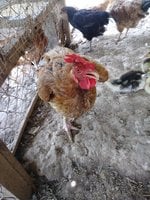Iguanahunter
Chirping
- Jun 2, 2018
- 72
- 72
- 63
Hi, I just received 15 red broilers from Ideal, any tips for care in order to keep them healthy? I plan on keeping tge females and some roos to further breed them, and I would like them to mature at a healthy pace. Thanks!




